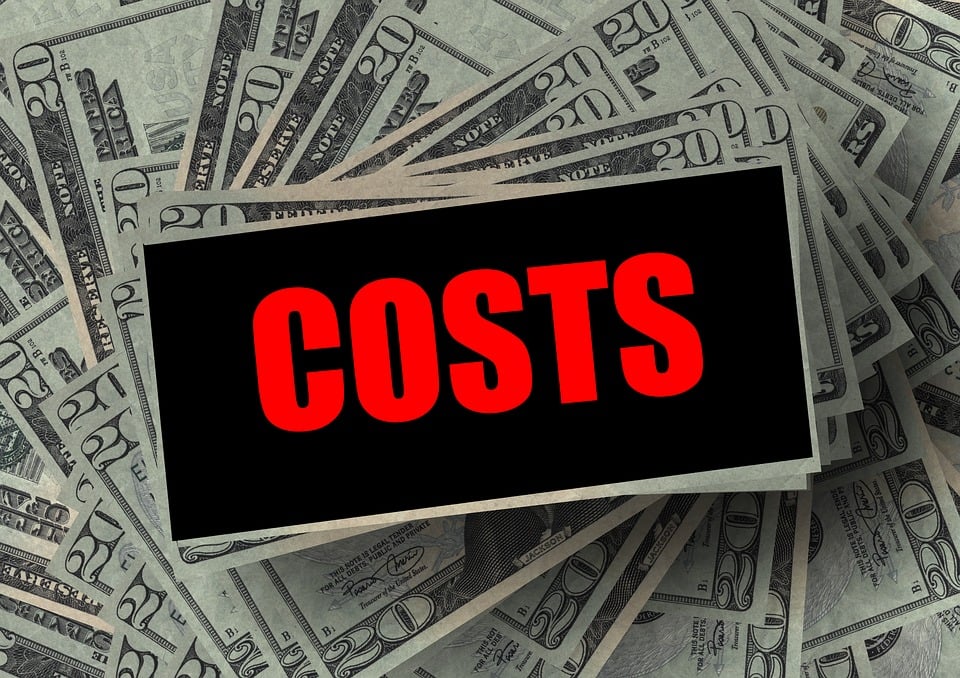Loan Costs: Penalties, Refinancing, and Financial Control

The fundamental decision to undertake a major loan obligation—whether it is a substantial home mortgage, a targeted business expansion loan, or a personal installment debt—involves entering into a complex, high-stakes financial relationship that profoundly dictates one’s economic trajectory for years. This necessary access to capital comes tied to strict contractual terms that extend far beyond the simple monthly payment. Two critical, often overlooked, mechanisms within these contracts can drastically impact the final, true cost of borrowing: prepayment penalties and refinancing costs.
Approaching the lending process without a meticulous, forward-looking understanding of these factors is a guarantee of potential financial surprises, lost opportunities for savings, and unnecessary long-term debt burden. Prepayment Penalties and Refinancing Costs represents the indispensable, specialized financial discipline dedicated entirely to identifying, calculating, and strategically mitigating these high-impact expenses. This crucial framework transforms a passive debt liability into an actively managed financial tool.
Understanding the core contractual traps, the mechanisms for calculating new loan expenses, and the strategic imperative of maximizing debt flexibility is absolutely non-negotiable. This knowledge is the key to minimizing total lifetime interest paid, accelerating equity growth, and securing absolute control over long-term financial commitments.
The Strategic Necessity of Debt Flexibility
The core objective of responsible debt management is to minimize the total amount of interest paid over the life of the obligation. Economic conditions and personal financial circumstances are rarely static over a 15- to 30-year loan term. Interest rates inevitably fluctuate. Personal income levels may substantially increase. These changes create crucial financial opportunities to pay off debt early or to secure a better borrowing rate.
Debt flexibility—the ability to proactively alter the loan terms without incurring massive, unnecessary expense—is a non-negotiable asset for the borrower. The prepayment penalty is a direct threat to this flexibility. This clause is a contractual fee charged by the lender for repaying a significant portion of the principal balance ahead of the original amortization schedule.
The lender includes the penalty to protect their anticipated profit. Lenders structure loans to receive a fixed amount of interest income over the full term. Early payoff reduces that guaranteed income. The penalty acts as a financial deterrent. It forces the borrower to choose between paying the debt early and paying the penalty fee.
Refinancing costs are the new, immediate expenses incurred when replacing an existing loan with a new one. While a lower interest rate is the immediate draw, the new closing costs associated with the second loan must be meticulously justified by the long-term savings. Ignoring the impact of these costs invalidates the entire financial maneuver. Strategic planning requires rigorous cost-benefit analysis.
Prepayment Penalties – The Flexibility Trap

Prepayment penalties are the contractual tools lenders use to lock in their expected interest revenue. This clause is a severe financial trap for borrowers who anticipate achieving higher income or receiving unexpected capital windfalls. Recognizing and avoiding this specific contractual risk is mandatory for preserving debt flexibility.
A. Defining the Penalty Clause
A Prepayment Penalty Clause is an explicit term in the loan agreement. It stipulates that the borrower must pay a specified fee if the loan principal is paid off entirely, or reduced significantly, before a predetermined date. The penalty is typically structured as a fixed percentage of the remaining principal balance or as a set number of months’ worth of interest payments. This fee is due instantly upon early repayment.
B. Penalty Duration and Severity
The duration of the penalty is a crucial detail. Penalties are often enforced only during the first few years of the loan term, typically the first three to five years. The severity varies dramatically based on the type of loan and the specific lender. Borrowers must actively seek loans that explicitly state “no prepayment penalty.” This ensures maximum future financial flexibility.
C. The Strategic Cost of Penalty
The strategic cost of a prepayment penalty is not just the fee itself. It is the cost of the lost opportunity to refinance the debt when market interest rates drop significantly. A borrower trapped by a penalty may be forced to retain a high-interest loan. This is done because the penalty fee negates the savings provided by a new, lower-rate mortgage. This cost prevents immediate debt optimization.
D. Loans Most Susceptible
Loans most susceptible to carrying prepayment penalties include specialized subprime mortgages, high-risk commercial loans, and certain types of privately sourced investment debt. Conventional, prime-rate residential mortgages generally do not contain these clauses. Borrowers must scrutinize the loan contract’s fine print meticulously before signing. The high cost of the penalty must be clearly understood.
Refinancing Costs (Closing Costs)

Refinancing is legally executed as a brand-new loan. This transaction incurs a fresh set of high-stakes financial expenses known as closing costs. These costs must be rigorously accounted for in the break-even calculation. Ignoring these fees is a guarantee of financial misjudgment.
E. Breakdown of Closing Costs
Closing Costs for a mortgage refinance are a complex collection of fees charged by various third parties. These include the mandatory Appraisal Fee (to verify the home’s current market value). They also include the Title Insurance Fee (to protect the lender’s interest against title defects). Legal, processing, and origination fees are also included in the final bill. These costs can easily total $2\%$ to $5\%$ of the new loan principal.
F. The Break-Even Point Calculation
The Break-Even Point is the non-negotiable metric that determines the viability of the refinance. It is the specific time, measured in months, required for the savings generated by the lower new monthly payment to fully recover the expense of the new closing costs. A refinance is only financially justifiable if the borrower plans to own the home for a period significantly longer than this calculated break-even point. This calculation protects against financial loss.
G. Financing the Costs
In many cases, the closing costs are financed (rolled) into the principal amount of the new loan. This practice eliminates the need for the borrower to pay cash upfront. However, rolling the costs into the principal means the borrower is now paying interest on the closing costs for the entire duration of the new loan term. This strategy increases the total long-term cost of borrowing significantly.
H. “No-Cost” Refinance Pitfalls
A “No-Cost” Refinance is a marketing term used by lenders. The borrower does not pay cash for closing costs upfront. However, the lender recovers these costs by charging a substantially higher interest rate on the new loan. While attractive for immediate cash flow, the borrower pays significantly more interest over the loan’s term. A truly informed borrower understands that there is no such thing as a free refinance.
Strategic Management and Mitigation
Effective debt management strategically utilizes the refinancing maneuver to minimize interest paid while proactively avoiding all unnecessary fees and penalties. The strategy must be dynamic, adapting to changes in personal income and external interest rates. Proactive management is the key to minimizing the lifetime cost of debt.
I. Negotiating Fee Waivers
Borrowers should actively negotiate fee waivers or reductions during the refinance process. Lenders will often waive or reduce origination, application, or appraisal fees to secure a low-risk client. Comparison shopping among multiple lenders strengthens the borrower’s negotiation leverage. Every waived fee directly shortens the crucial break-even point.
J. Strategic Timing (Interest Rate)
Strategic timing for refinancing is paramount. The ideal time is when prevailing market interest rates are demonstrably lower than the rate on the existing mortgage. A significant drop of $1\%$ to $2\%$ in the market rate makes a refinance overwhelmingly compelling, despite the new closing costs. The borrower must continuously monitor rate trends.
K. Pre-Payment Acceleration
For loans without a penalty, the borrower should utilize pre-payment acceleration (making extra principal payments). This reduces the principal balance quickly. This accelerates equity building and ensures the total interest paid is minimal. This acceleration maximizes the effective return on the entire property investment.
L. Managing Variable Rate Risk
For borrowers with a high-risk Adjustable-Rate Mortgage (ARM), refinancing into a Fixed-Rate Mortgage (FRM) is a non-negotiable risk mitigation strategy. This action locks in budget predictability. It shields the borrower from the massive, unpredictable increases in the monthly payment when the ARM’s introductory period expires. This conversion is a crucial defensive maneuver.
Conclusion
Prepayment Penalties and Refinancing Costs are two critical expenses that dictate the true lifetime cost of debt.
Prepayment penalties are contractual fees designed to protect the lender’s interest income, often restricting the borrower’s financial flexibility.
Refinancing costs include new appraisal and title insurance fees, necessitating a meticulous break-even point calculation before proceeding.
The financial viability of the refinance maneuver is secured only if the borrower plans to own the asset for a period longer than the calculated break-even point.
Strategic avoidance of prepayment penalties is mandatory, preserving the borrower’s option to refinance when market interest rates subsequently decline.
The Cash-Out Refinance is a high-stakes move, converting non-liquid home equity into cash, but increasing the total debt burden secured by the primary residence.
The “No-Cost” refinance is a financial illusion where the borrower pays for closing fees through a substantially higher, non-negotiable interest rate on the new loan.
Mastering the strategic timing of the refinance, moving when the market rate drops significantly, provides the most substantial long-term interest savings.
Negotiating fee waivers and meticulously comparing the true APRs from multiple lenders is the key to minimizing the total cost of the new borrowing obligation.
The disciplined application of a refinance strategy transforms a financially suboptimal debt contract into a high-value, efficient, optimized asset liability.
Financial discipline is the final, authoritative guarantor of control over long-term debt and accelerated accumulation of wealth.
Understanding these contractual mechanisms is the ultimate key to minimizing unforeseen cost and maximizing the return on investment in major assets.